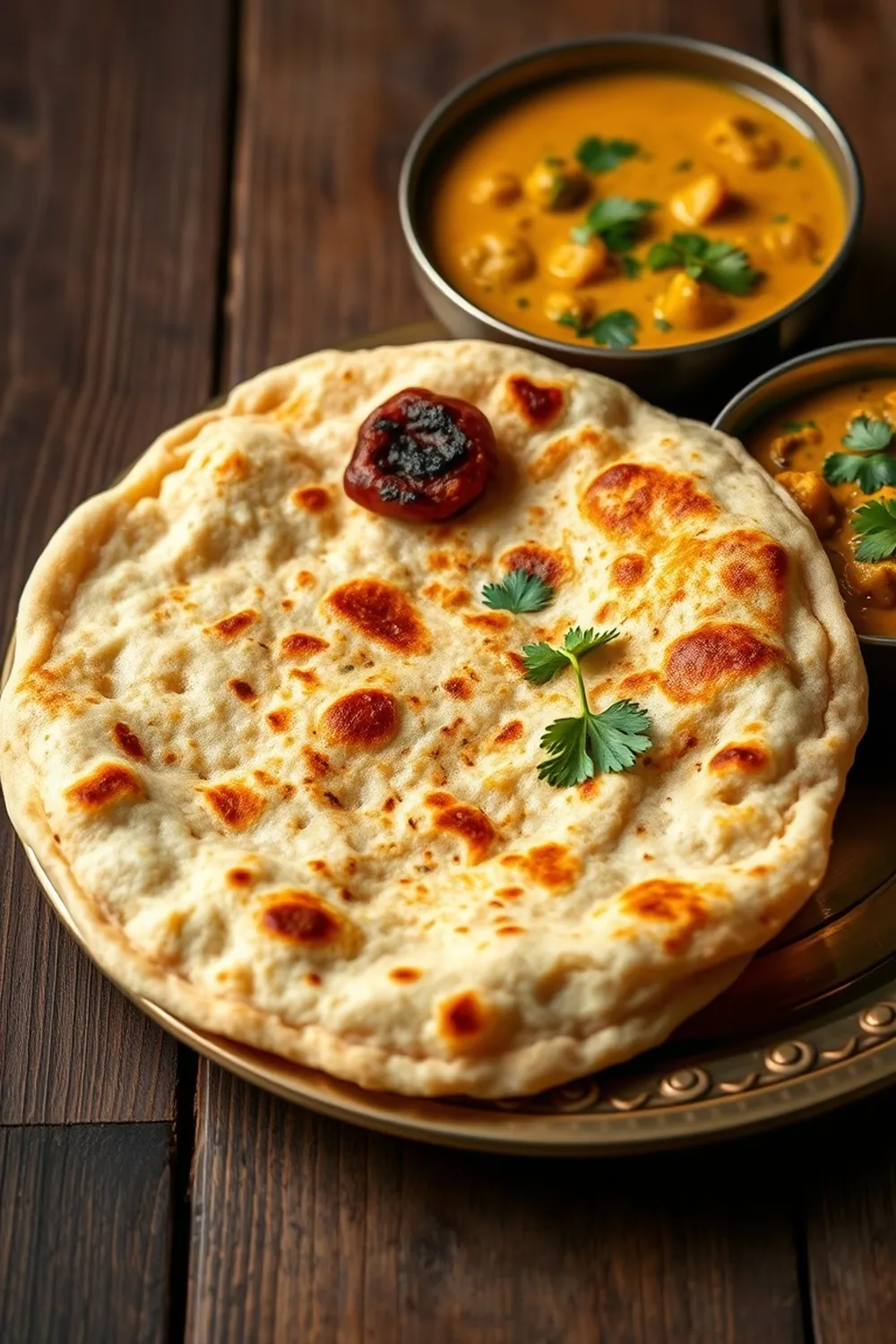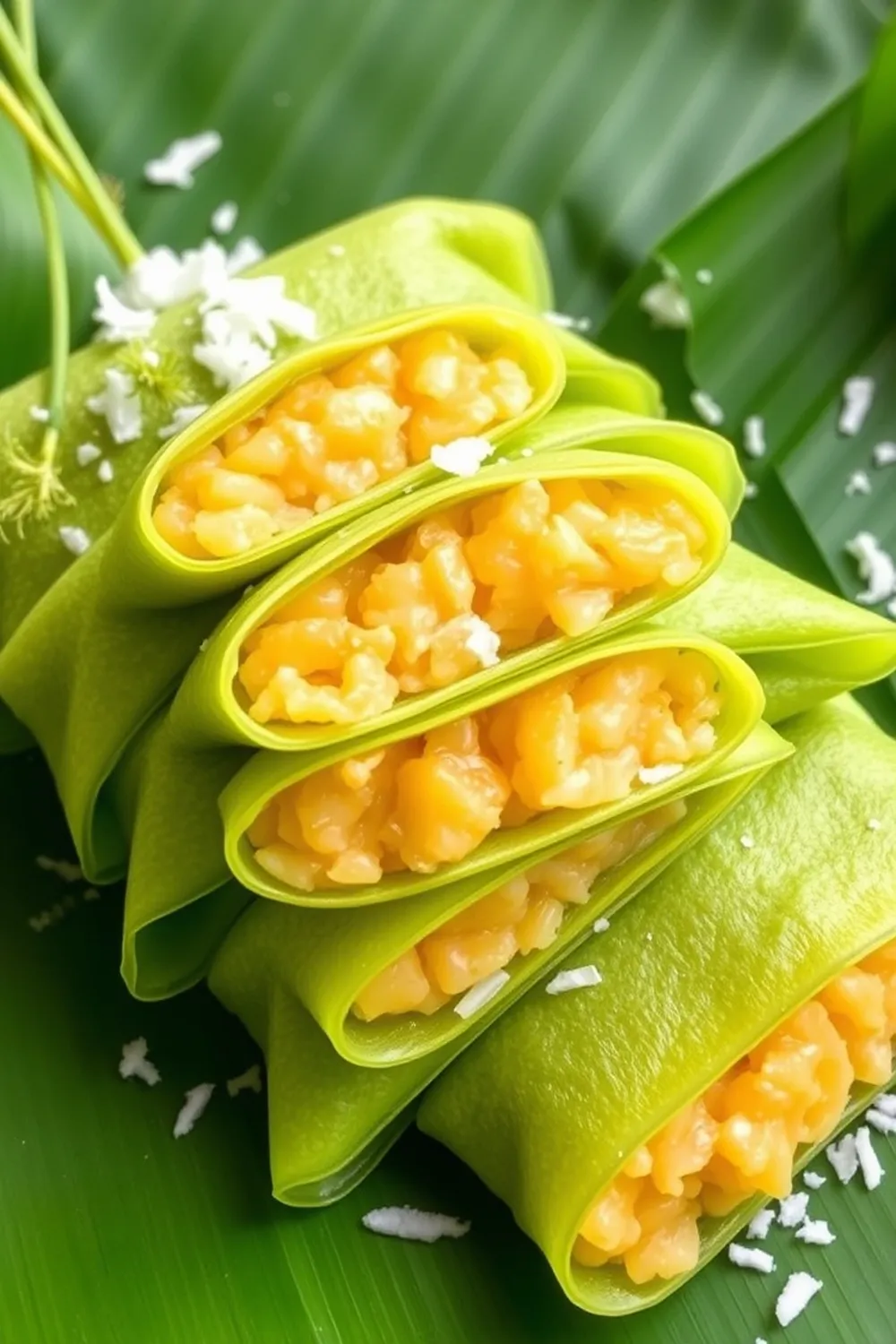- Knead dough with whole wheat flour, salt, ghee/oil, and water until smooth. Let it rest for 20-30 minutes.
- Divide the dough into equal-sized balls. Roll one ball into an 8-inch thin disc.
- Apply ghee/oil to the disc, sprinkle with flour, and fold it into pleated layers.
- Roll the pleated dough into a tight spiral and gently flatten it into a 7-inch paratha.
- Heat a griddle or tava. Cook the paratha on both sides, applying ghee until golden brown and crispy.
- Serve hot with curries like paneer butter masala or pickles.
- Calories:250 kcal25%
- Energy:1046 kJ22%
- Protein:5 g28%
- Carbohydrates:35 mg40%
- Sugar:2 mg8%
- Salt:200 g25%
- Fat:10 g20%
Last Updated on 4 months by Neha Deshmukh
Whole Wheat Paratha Recipe – Flaky Layered Indian Flatbread
Hey everyone! If you’ve ever craved that perfectly flaky, buttery (or ghee-y!) Indian flatbread that just melts in your mouth, you’re in the right place. I remember the first time I really nailed a paratha – it was a total game changer. Today, I’m sharing my go-to whole wheat paratha recipe, guaranteed to become a staple in your kitchen too.
Why You’ll Love This Recipe
This isn’t just any paratha recipe. We’re talking layers upon layers of deliciousness, achieved with a little bit of technique and a whole lot of love. It’s comforting, versatile, and honestly, incredibly satisfying to make. Plus, using whole wheat flour adds a lovely nutty flavour and a boost of goodness. It’s perfect for a hearty breakfast, a flavourful lunch, or a comforting dinner.
Ingredients
Here’s what you’ll need to create these flaky wonders:
- 2 cups whole wheat flour (approx. 240g)
- 1-2 teaspoon ghee or oil
- As required salt
- As required water (approx. ¾ cup, or 180ml – start with less and add more as needed)
- As required ghee or oil (for roasting)
Ingredient Notes
Let’s talk ingredients for a sec! Using good quality whole wheat flour (atta) is key. It really impacts the texture and flavour. I prefer using a finely ground atta for softer parathas.
Now, ghee versus oil – that’s a personal choice! Ghee lends a beautiful richness and aroma, but oil works perfectly well, especially if you’re looking for a lighter option or want to keep it vegan. My grandmother always used mustard oil, which gives a really distinct flavour – it’s worth trying if you’re feeling adventurous!
You might also see parathas made with ajwain seeds (carom seeds) sprinkled in the dough. They add a lovely digestive quality and a subtle, earthy flavour. It’s a regional variation I really enjoy, especially during the winter months.
Step-By-Step Instructions
Alright, let’s get cooking!
- First, in a large bowl, combine the whole wheat flour and salt. Add the ghee or oil and rub it into the flour with your fingertips until it resembles breadcrumbs. This is where the flakiness starts!
- Gradually add water, a little at a time, and knead the dough until it comes together into a smooth, pliable ball. Don’t over-knead, though – about 5-7 minutes is perfect.
- Cover the dough with a damp cloth and let it rest for 20-30 minutes. This allows the gluten to relax, making the parathas softer. Trust me, this step is important!
- Divide the dough into 8 equal-sized balls.
- Take one ball and roll it into an 8-inch (20cm) thin disc.
- Now for the layering magic! Brush the disc with ghee or oil, sprinkle lightly with flour, and fold it into a pleated triangle or a roll.
- Gently roll the pleated dough into a tight spiral, then flatten it back into a 7-inch (18cm) paratha. Be gentle – you want to keep those layers intact!
- Heat a griddle or tawa over medium heat. Place the paratha on the hot griddle and cook for about a minute on each side.
- Flip and apply ghee or oil to both sides, cooking until golden brown and crispy. You’ll see those beautiful bubbles forming – that’s how you know it’s ready!
- Serve immediately!
Expert Tips
Want to take your paratha game to the next level? Here are a few things I’ve learned along the way:
- Flaky Layers: The key is gentle rolling and generous use of ghee/oil between layers. Don’t press too hard when rolling the spiral – you want to preserve those air pockets.
- Preventing Hard Parathas: Don’t overcook them! Overcooking dries them out. Also, resting the dough is crucial.
- Troubleshooting: If your paratha is tearing, the dough might be too dry. Add a teaspoon of water at a time and knead again. If it’s sticking to the rolling pin, add a little more flour.
Variations
Let’s get creative!
- Vegan Paratha: Simply substitute the ghee with oil throughout the recipe. It’s just as delicious!
- Gluten-Free Paratha: This one’s a bit trickier, but you can experiment with a blend of gluten-free flours like rice flour, sorghum flour, and tapioca starch. You might need to add a binding agent like xanthan gum.
- Spice Level: Add a pinch of chili powder or finely chopped green chilies to the dough for a little kick. My friend loves adding a dash of turmeric too!
- Festival Adaptations: Parathas are a must-have during festivals like Lohri and Makar Sankranti. They’re often stuffed with seasonal ingredients like radish or sweet potatoes during these celebrations.
Serving Suggestions
Parathas are incredibly versatile. They pair beautifully with:
- Paneer Butter Masala
- Dal Makhani
- Aloo Sabzi (Potato Curry)
- Pickles (my personal favourite!)
- Yogurt (raita)
Storage Instructions
Leftover parathas can be stored in an airtight container at room temperature for a day or two.
FAQs
Let’s answer some common questions:
Q: What is the best flour to use for parathas?
A: Whole wheat flour (atta) is traditional and gives the best flavour and texture. Look for a finely ground variety.
Q: How do I get perfectly flaky layers in my parathas?
A: Generous ghee/oil, gentle rolling, and resting the dough are the keys!
Q: Can I make the dough ahead of time?
A: Absolutely! You can make the dough a day in advance and store it in the refrigerator. Just bring it to room temperature before rolling.
Q: What is the difference between a paratha and a roti?
A: Rotis are typically made without layers and are cooked directly on the flame, often puffing up. Parathas are layered and cooked with ghee/oil, resulting in a richer, flakier texture.
Q: How do I reheat leftover parathas to maintain their softness?
A: Heat a griddle or tawa and lightly warm the parathas on both sides. You can also sprinkle a little water on them while reheating to help restore some moisture.
Enjoy making these parathas! I hope this recipe brings a little bit of Indian sunshine into your kitchen. Let me know how they turn out in the comments below!










